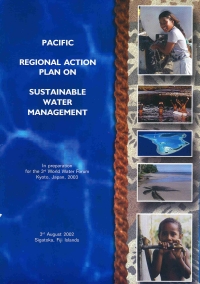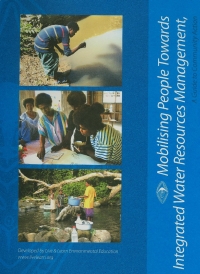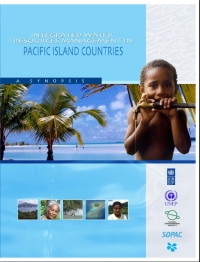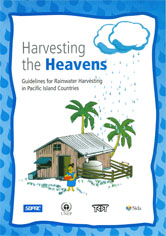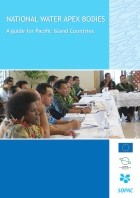SOPAC Water Publications
Water Video gallery contains videos from around the pacific. Please contact our water team if you want the hardcopy DVD posted to you.
An Economic Assessment of Drinking Water Safety Planning Koror-Airai, Palau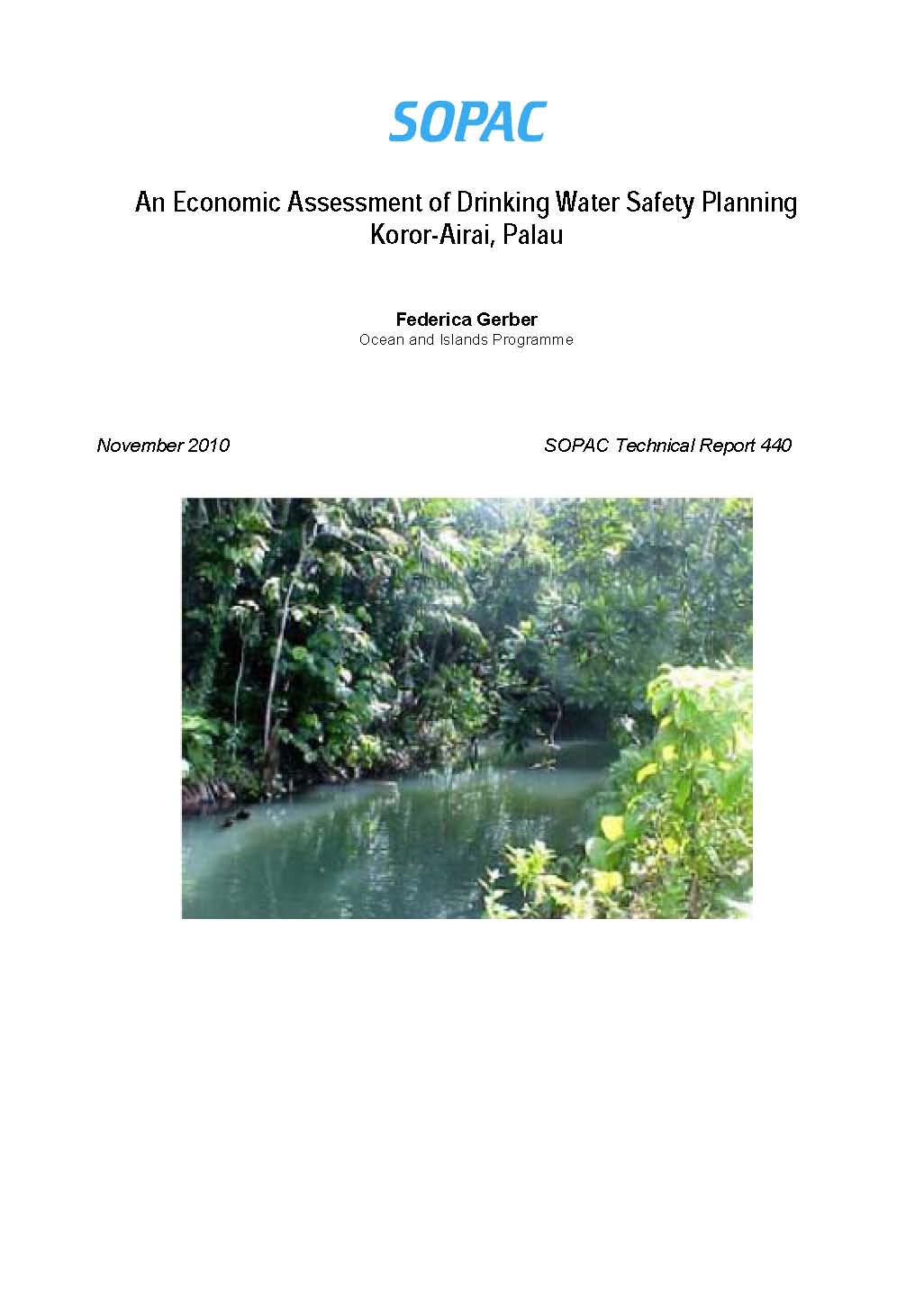 |
This Cost-Benefit Analysis aims to compare the costs of implementing the improvement schedule to the long-term benefits of doing so. The information generated is to be used to inform stakeholders in Palau of the rewards from supporting the DWSP approach, demonstrating the potential benefits of investing in the Plan. The Analysis concludes that the expected net benefits of the K-A drinking water safety plan in Palau are thus estimated at US$ 1.1 million – a return of US$ 5.90 on each US$ 1.00 invested. |
IWRM Planning Brochure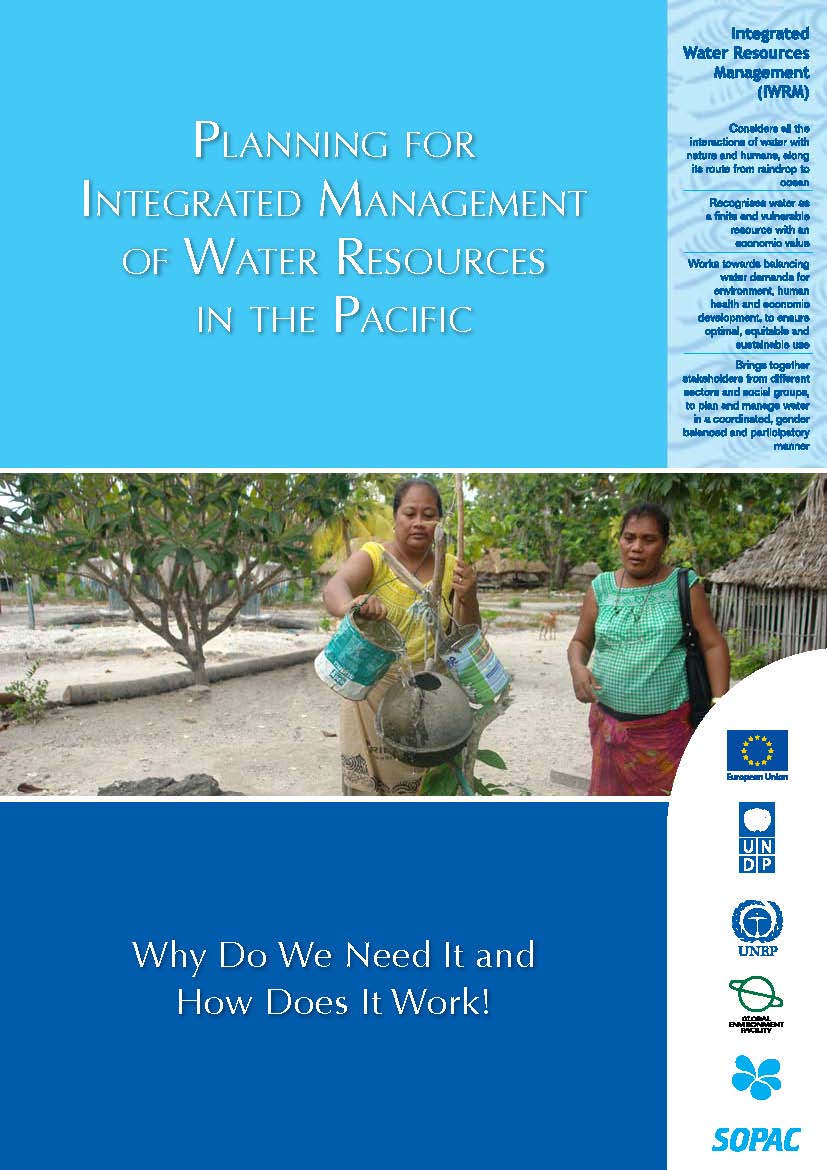 |
The IWRM Planning Brochure has been put together and produced as a resource to help programme managers and water committees understand the planning process better. The resource is informative, illustrative and explains the need for working together to manage water sustainably.
Hard copies of the IWRM brochure are available on request via iwrm@sopac.org or can be downloaded by clicking on the cover icon.
|
Adapting to Climate Change in water resources & water services in Caribbean & Pacific small islands countries  |
SOPAC provided a joint contribution with CEHI to the preparation of a session at the 5th World Water Forum on water and climate change adaptation through a Perspective Document on Adaptation to Climate Change in water resources and water services in Caribbean and Pacific island countries. The outcomes of the Perspective Documents were summarised by WWC, IUCN and CPWC and included the recognition for SIDS as being one of the hotspots deserving attention.
The Perspectives on water and climate change adaptation led furthermore to the consortium’s publication towards a framework for climate-proofing “don’t stick your head in the sand!”. The above documents are providing guidance to climate adaptation in the water sector in the Caribbean and Pacific island countries |
|
|
|
Drinking Water Safety Planning A Practical Guide for Pacific Island Countires 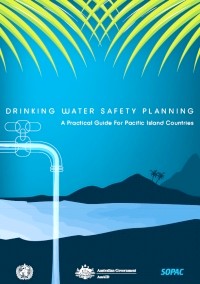 |
This Guide is primarily for water supply managers, engineers and operators and introduces a more proactive way of managing drinking water supplies through a comprehensive risk assessment and risk management approach. Implementing DWSPs helps achieve a more effective drinking water supply system. While it is primarily targeted at water suppliers, this Guide should also assist other organizations, such as drinking water regulators and surveillance authorities gain a better understanding of the role played by a drinking water safety plan in improving or maintaining public health.
It is important to realize that drinking water safety is an issue that cuts across several sectors, most significantly water supply and utilities, Health and Environment, but also land and water resource management, national planning and economics, NGOs, private sector and community based organizations. As such the success of developing and implementing an effective DWSP is increased significantly by engaging other sectors rather than the water supply operators or utilities working in isolation. |
Converting commitment into action 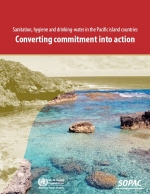 |
This report provides valuable insights into sanitation and drinking water statistics in Pacific island countries. The information held within this report is timely, given the United Nations declaration that 2008 be the International Year of Sanitation and the real and very urgent need to guide further action to progress and reach the Millennium development Goals of cutting the proportion of people without access to basic sanitation in half, by the year 2015. Publications of the World Health Organization can be obtained from Marketing and Dissemination, World Health Organization, 20 Avenue Appia, 1211 Geneva 27, Switzerland (tel: +41 22 791 2476; fax: +41 22 791 4857; e-mail: bookorders@who.int). |
|
The final Community Mobilisation Guidelines to help assist communities and facilitators working with them to look at IWRM approaches at a village and community level are now available. Developed by Live and Learn Environment Education, supported by SOPAC and UNDP and UNEP, the guidelines are a key output from the Project Design phase of the Sustainable Integrated Water and Wastewater Management project supported by the Global Environment Facility. This project will work with 14 countries in the Pacific starting in 2008. Through a network of national Demonstration Projects supported by regional capacity building components the project aims to raise awareness on IWRM approaches and strengthen national and regional approaches to integrate improved water management in the water sector and into wider national and community interventions. |
|
|
Under the Global Environment Facility funded Integrated Water Resources and Wastewater Management Project 14 countries of the Pacific Region prepared detailed Diagnostic Reports summarising the status of their water resources and assessing the barriers to implementing Integrated Water Resource Management (IWRM) approaches in their respective countries. This Synopsis report represents a summary of the 14 Diagnostic Reports, providing a baseline status of IWRM approaches in country. It will provide a useful monitoring report over the coming years as countries start to implement IWRM approaches. The report provides some simple solutions to achieving IWRM in small island environments.
Copies of the Synopsis Report are available directly from SOPAC, or can be downloaded by clicking on the cover icon. |
|
|
A brief colourful overview of Integrated Water Resources Management (IWRM) and the aims and activities of the Pacific IWRM programme. Hard copies of the IWRM brochure are available on request via iwrm@sopac.org or can be downloaded by clicking on the cover icon. |
|
Harvesting the Heavens Participatory Training in rainwater Harvesting 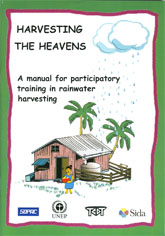 |
This manual of Participatory Training in rainwater Harvesting was developed as part of the United Nations Environment Programme (UNEP) project titled "Pilot Project on Empowering Women in Rainwater Harvesting in the Pacific Atoll Islands" with funding from the Government of Sweden. The manual is targeted fro use by Non-Government Organisations (NGOs), Community-Based Organisations (CBOs) or people involved in rainwater harvesting, and contains a number of participatory techniques, tools and activities based on best practices from a variety of sources. Copies of this Manual can be obtained from the SOPAC Secretariat (arieta@sopac.org) or you can download by clicking on the cover icon. The manual has also been translated into the tongan language and is available via this link: Harvesting the Heavens: A Manual for particpatory training in rainwater harvesting (tongan version) |
The "Harvesting the Heavens: Guidelines for the Rainwater Harvesting in the Pacific Island Countries" were developed as part of the United Nations Environment Programme (UNDP) demonstrating projects on "Empowering Women in Rainwater Harvesting" funded by the Government of Sweden through their development agency SIDA and carried out in Africa (Kenya) and the Pacific (Tonga). The guidelines capture the lessons learned during the preparation and the implementation of the demonstration project executed by the South Pacific Applied Geoscience Commission (SOPAC) and carried out in the Island group of Vava'u of the Kingdom of Tonga through the Village Women's Development Programme (VWDP) of the Tonga community Development Trust (TCDT). Copies of this Guideline can be obtained from the SOPAC Secretariat (arieta@sopac.org) or you can download the document by clicking on the cover icon. |
|
Tapping Connections between People and Water 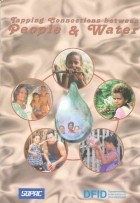 |
Through the funding from the Department for International Development (DFID), a Community Participation and Gender survey was carried out in the region. The overall objective of the study was to collect, analyse and disseminate findings on the extent of community participation, with particular attention to gender and poverty issues, in water and sanitation in Pacific Island countries, in order to offer recommendations and guidelines for improving practice. Outputs from the project include Guidelines for field workers entitled “Tapping the Connection Between Water and People. Field workers can use the handbook when working with communities to install maintain water and sanitation systems as well as support health and hygiene initiatives. The guidelines also provide a list of publications and organisations, which can provide suggestions on techniques for community participation in water and sanitation programmes. Furthermore the guideline has used several illustrations with simple language, avoiding scientific jargons so that community members easily understand it. It also raises 7 questions to think about, and to some extend answers have been provided. |
A Gender Tale of Water and Energy 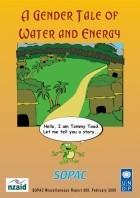 |
This comic booklet has been jointly developed by the Pacific Energy and Gender Network (PEG) and the Water, Sanitation and Hygiene (WASH) programme of the Community Lifelines Programme of the Pacific Islands Applied Geoscience Commission (SOPAC). The aim of this booklet is create awareness on water, energy and gender issues. Water and energy is used on a daily basis, but the importance of using these wisely, is often forgotten. The target audience for this booklet is mainly primary and lower secondary school students, communities and community leaders. It will also be used as awareness materials for World Earth Day and World Water Day. We hope that readers will find this booklet exciting but at the same time educational. |
|
This is a brief introduction to some of the key issues and steps to be considered in the establishment and strengthening of National Water Apex Bodies (NWABs) in Pacific Island Countries. It endeavours to give the reader some initial advice on questions such as:
More specifically, the guide aims to help national civil servants involved in strengthening NWABs to draft or revise Terms of Reference for their National Water Apex Bodies in order to support reform towards integrated water resources management. For this purpose, the guide includes a checklist for Terms of Reference as Annex 1.
This is a first edition and should not be seen as a complete review but rather a brief introduction to the basics. Feedback on the content and the usefulness of this guide, and suggestions for how to improve it, are gratefully received by iwrm@sopac.org |
|
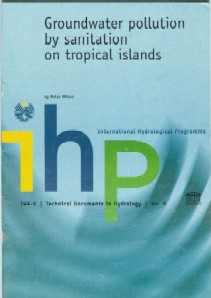    |
This publication is the result of studies commissioned by the International Hydrological Programme of UNESCO. The report reviews the scientific foundations for managing sewage contamination of groundwater as drinking water supply with particular reference to small tropical countries. This includes a brief assessment of the extent of groundwater pollution by sanitation systems, the design of sanitation systems, the nature of contaminats in sewage, their fate in the subsurface environment, including factors affecting their attenuation and the methods which have been used to study the movement of sewage contaminants in groundwater. It concludes with a summary of options for manageing the problem, including criteria for establishing common sewage systems; well-head policy protection actions; siting, design and maintenance of sanitation systems; monitoring procedures related to objectives; treatment of water supplies and public education and action programs. |
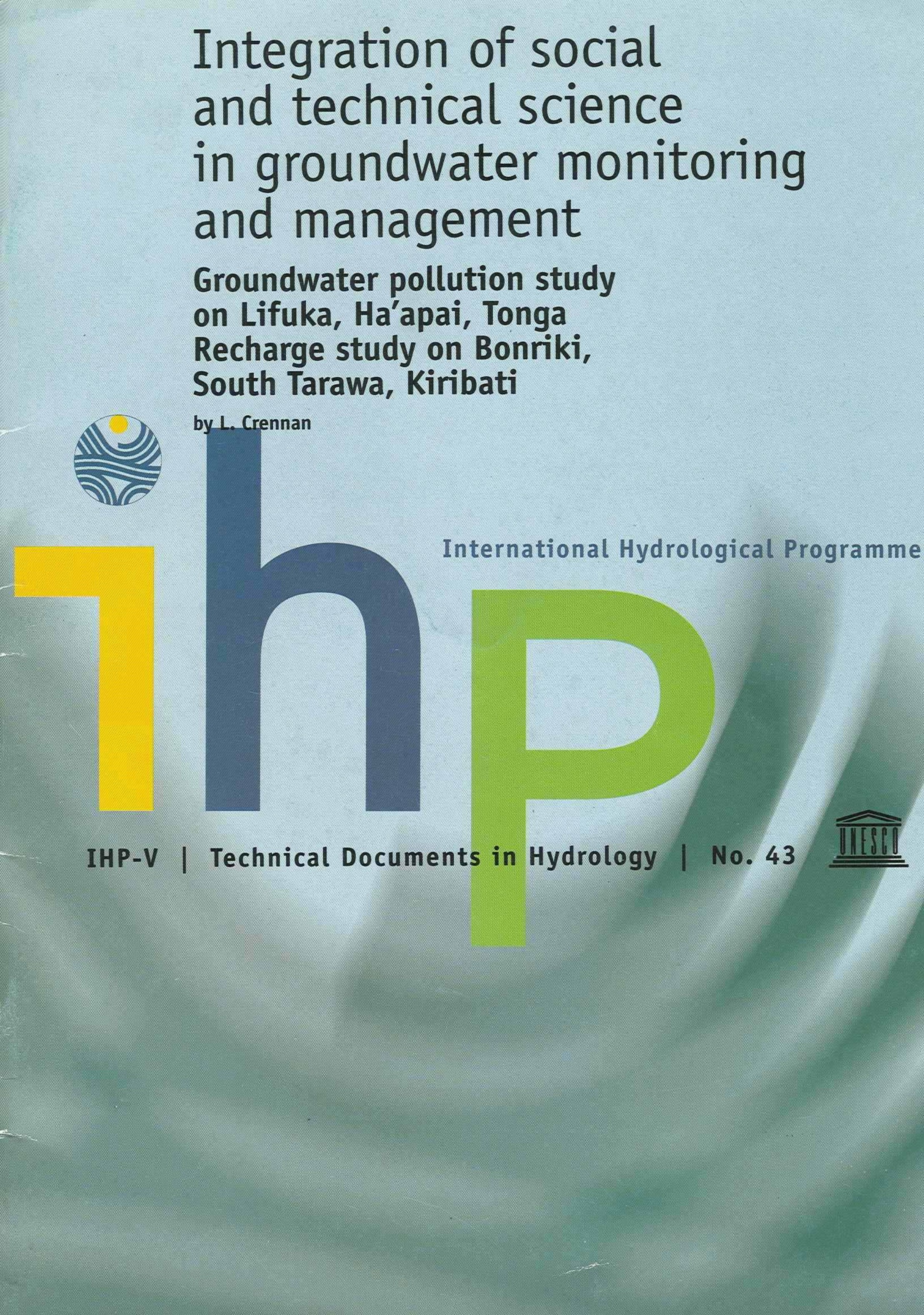 |
This paper describes a groundwater polltuion study on the island of Lifuka (Tonga), in a village where private wells are important source of water. Comparisons are also made to the findings of a groundwater recharge project which was undertaken in the Island of Tarawa (Kiribati). Both the projects were undertaken under the International Hydrological Programme of UNESCO Humid Tropics Programme with the aim to increase the understanding and effective amangement of groundwater resources. |
A Directory of Environmentally Sound Technologies for the Integrated Management of Solid, Liquid and Hazardous Waste for Small Island Developing States (SIDS) in the Pacific Region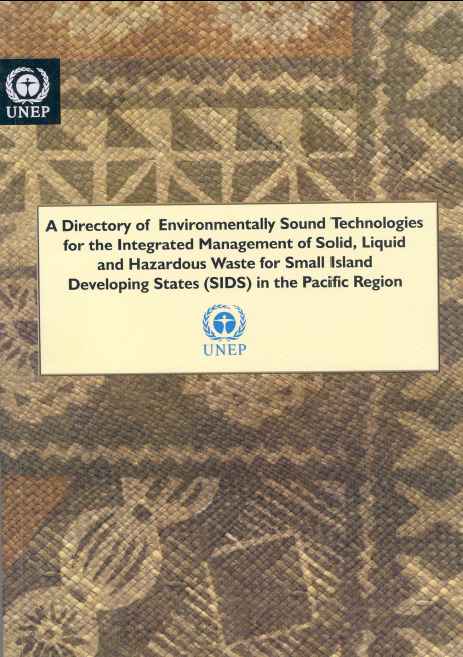 |
This publication is part of UNEP colloboration with SIDS on the implementation of the Wastewater chapter of the Barbados Programme of Action (BPoA). The directory of environmentally sound technologies for the integrated management of sloid, liquid and hazardous waste for SIDS in the Pacific Region focuses primarily on proven sound environmental technologies for waste management plus those currently successfully being used in the SIDS within the Pacific Region. In addressing each broad waste management topic, sound practices are also provided, based on lessons learnt from the past. The Directory is a simple guide, which tries to convey technical issues in an easy and undertsnadable manner and is a UNEP initiative to assist SIDS in addressing waste management issues. |
Pacific Wastewater Framework for Action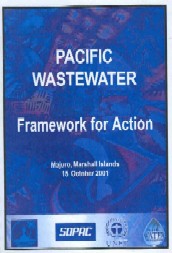 |
The Pacific Wastewater Framework for Action comprises a list of proposed actions to be undertaken at national and regional levels to achieve the goals that are laid out in the Pacific Wastewater Policy Statement and which refers to the GPA Strategic Action Plan and Guidance Document on Wastewater (UNEP/GPA, WHO, UNCHS-Habitat & WSSCC). |
Pacific Wastewater Policy Statement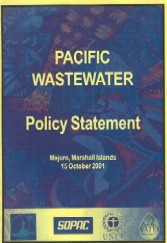 |
The Pacific Wastewater Policy Statement sets out a framework of guiding principles and policies to guide future development and co-operation by the Pacific Island Countries (PICs). It compromises of a list of proposed guiding principles and policies that is to direct the way Pacific deals with its waste management issues. |
Water Qulaity Monitoring in Pacific Island Countries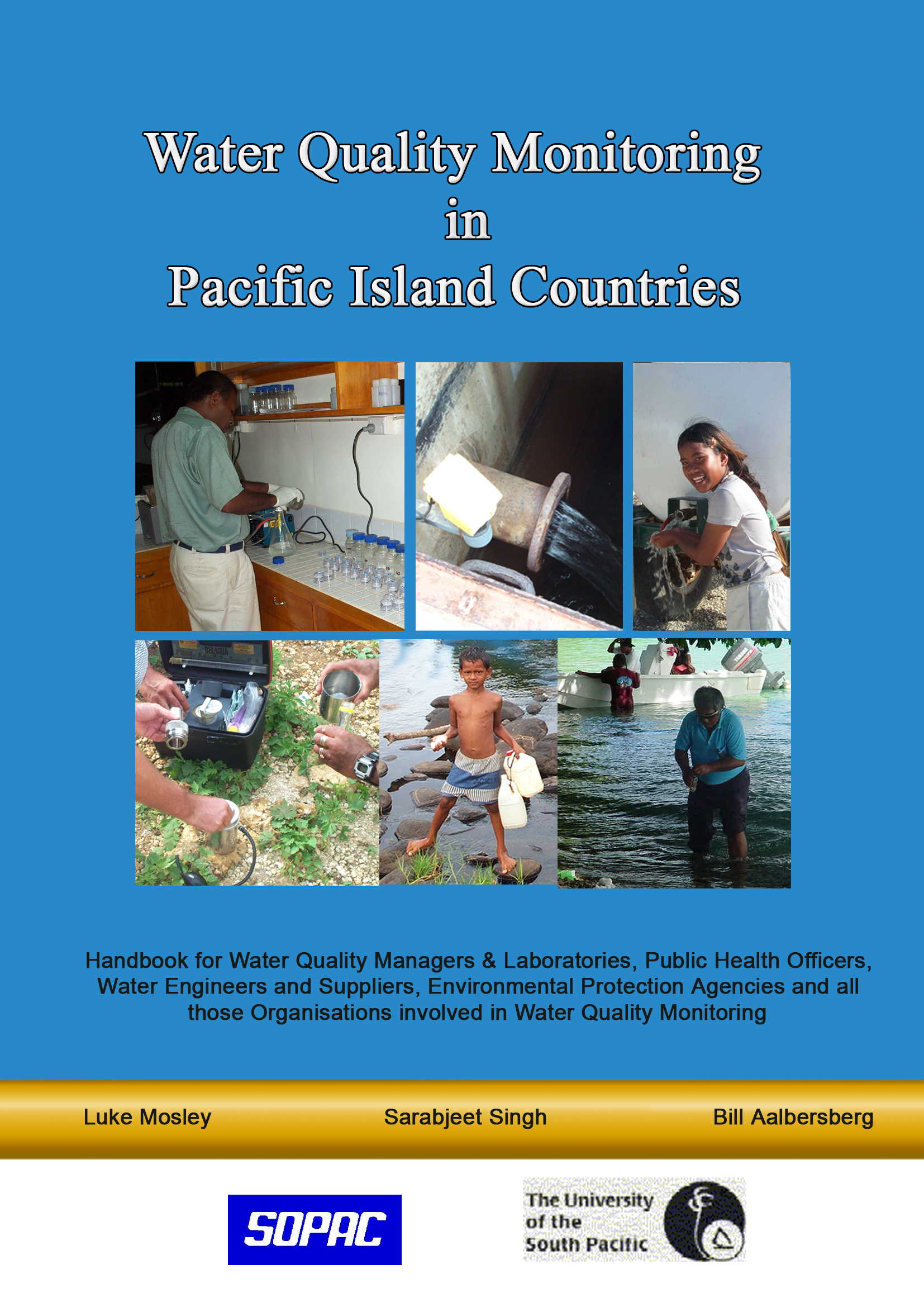 |
This handbook – Water Quality Monitoring in Pacific Island Countries – is a product of the partnership between Institute of Applied Sciences (IAS) of the University of the South Pacific and the South Pacific Applied Geoscience Commission (SOPAC) in the area of building up capacity for water quality monitoring in the Pacific Island countries. It provides an illustrated guide to setting up a water quality programme to describing the many techniques invovled in water quality monitoring (both drinking water and coastal and surface water). It also provides an overview of waste management and analysis methods and method documentation. |
Pacific Framework for Action on Drinking Water Quality and Health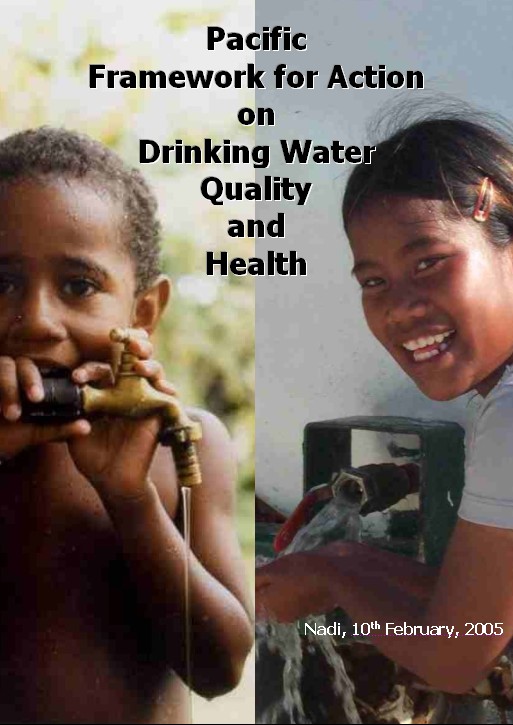 |
This Framework for Action was developed at the WHO Regional Workshop on Drinking Water Standards and Monitoring in Pacific Island Countries held 7-10 February 2005. The framework was prepared in response to the recommendations by the Pacific Island Countries’ participants and supports the implementation of drinking water quality actions envisioned in the overarching Pacific Regional Action Plan on Sustainable Water Management. The recommendations and actions are structured under six thematic areas, corresponding to the six themes of the Regional Action Plan (RAP) for Sustainable Water Management. Hence, the Framework for Action builds on and supports the implementation of drinking water quality activities envisioned in the RAP. |
Sanitation Park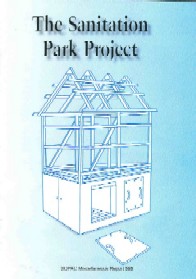 |
The Sanitation Park project was developed to help address local sanitation and hygiene issues. This brochure provides an overview of the project (from inception to implementation) and is an illustrated guide to the various systems on display at the Park in Tamavua (Suva, Fiji) |
















